Material Science and Engineering
Additive boosts through a twist in the tail
Unconventional perovskites with an inverted structure see a leap in efficiency and longevity with an amine-based additive.
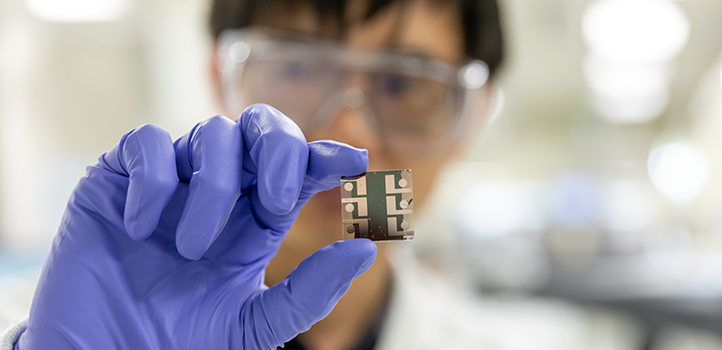
KAUST materials scientists make long-lived inverted perovskite solar cells with high efficiency. 2020 KAUST
Long-lived inverted perovskite solar cells can achieve efficiencies close to that of highly efficient yet fragile conventional perovskite solar cells, researchers at KAUST have shown. The discovery could lead to perovskite solar panels that have operational lifetimes and light-capturing efficiencies that rival traditional silicon solar panels but that are significantly simpler, less energy-intensive and less expensive to make.
In the lab, metal halide perovskite solar cells have jumped from power conversion efficiencies of 3.8 percent to 25.2 percent in just a decade. “Conventional perovskite solar cells, with their component layers arranged in an ‘n-i-p’ structure, offer the highest efficiencies,” says Osman Bakr from the KAUST Catalysis Center, who led the research. However, these devices require ionic dopants, which are unstable and shorten the solar panel’s lifetime.

(l-r) Co-authors Abdullah Alsalloum, Xiaopeng Zheng and Bekir Turedi discuss the process for making inverted perovskite solar cells without the use of unstable dopants.
© 2020 KAUST
“Inverted ‘p-i-n’ perovskites do not need these unstable dopants to extend their operational lifetime,” says Xiaopeng Zheng, first author of the study. “However, the efficiencies of inverted perovskite solar cells lag significantly behind those of regular structured devices,” he says. Until now, the best inverted perovskite reached 20.9 percent efficiency.

The team added long-chain alkylamine ligands into the mixture during perovskite production.
© 2020 KAUST
Now Bakr and colleagues, in collaboration with researchers from the University of Toronto in Canada, have significantly improved inverted perovskite cell efficiency. By adding long-chain alkylamine ligands (AALs) into the mixture during perovskite production, the team created an inverted perovskite solar cell with enhanced stability and with a record-certified efficiency of 22.3 percent. “Just a trace amount of alkylamine was enough to improve the structural and optoelectronic properties of the perovskite in multiple ways,” Zheng says.
Adding long-chain AALs into the perovskite mix during fabrication meant that the tails of the AALs interacted—this aligned neighboring grains to reduce boundary defects in the final perovskite film. As the perovskite grains came together, the AALs were pushed to the outer surface, forming a protective coating. The amine head of each AAL molecule could also fill point defects in the perovskite structure. Overall, adding long-chain AALs boosted the electrical output of the material in sunlight and also further improved stability and longevity.
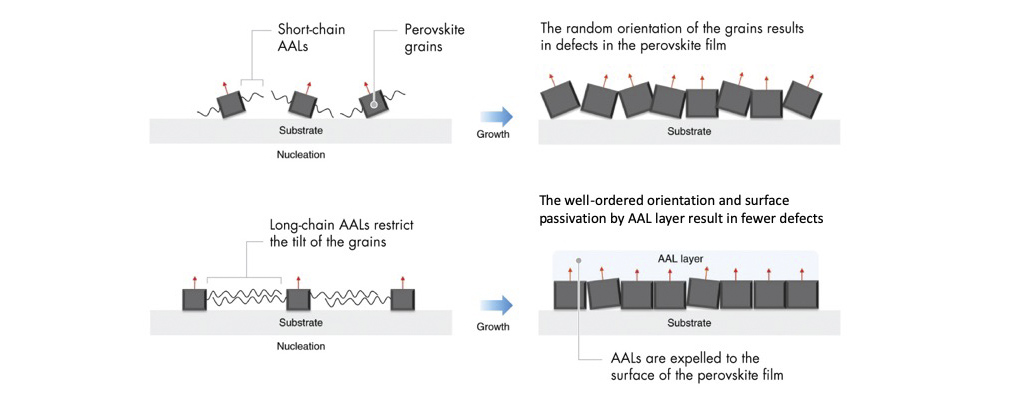
The mechanisms underpinning efficiency enhancements. Compared to short-chain alkylamine ligands (AALs) (top), long-chain AALs (bottom left) help neighboring perovskite grains to align, resulting in fewer defects in the final film (bottom right).
© 2020 Xiaopeng Zheng
“In the next stage of our research, we will scale up the production of perovskite cells to achieve a high-performance and market-ready product,” Zheng says. “Developing a scalable method for creating large-area, high-quality perovskite films on different surfaces, including flexible substrates and silicon wafers, will overcome the key remaining hurdle to commercialization,” he says.

The final device shown here under illumination.
© 2020 KAUST
References
- Zheng, X., Hou, Y., Bao, C., Yin, J., Yuan, F., … Bakr, O. Managing grains and interfaces via ligand anchoring enables 22.3%-efficiency inverted perovskite solar cells. Nature Energy 5, 131-140 (2020).| article
You might also like
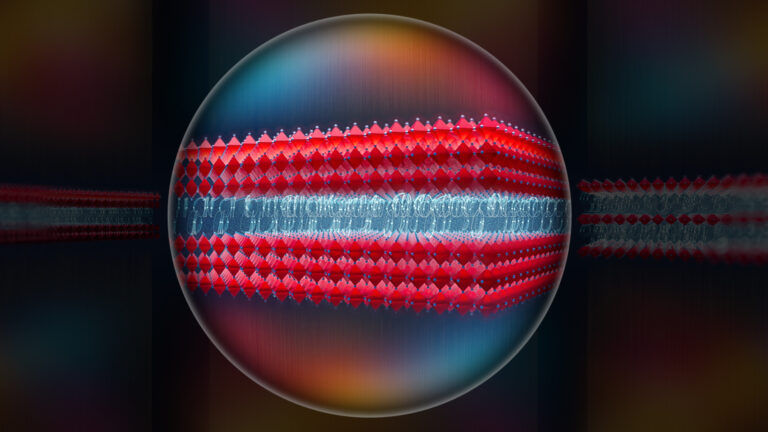
Material Science and Engineering
Electron movie guides design of layered perovskite materials
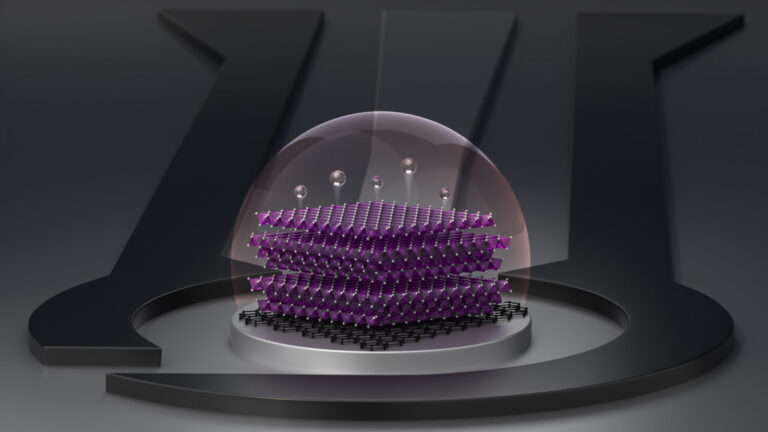
Material Science and Engineering
Remote region sensor for essential vitamin deficiency
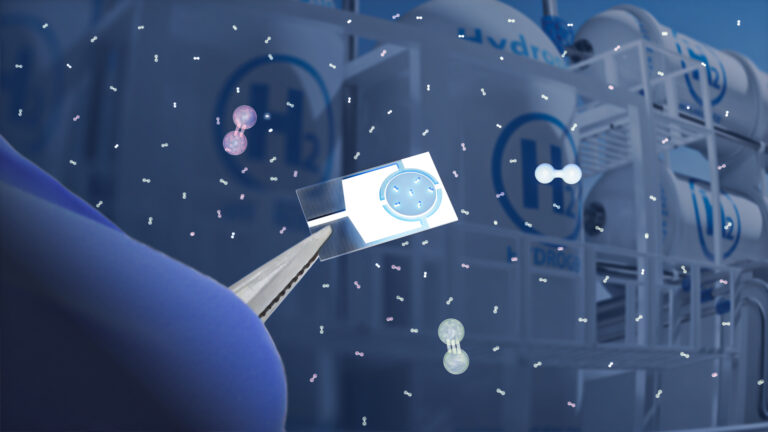
Material Science and Engineering
Low-power hydrogen sensor detects leaks in an instant

Material Science and Engineering
Illuminating pathways to long-lived organic solar cells

Chemistry
Beating the dark current for safer X-ray imaging

Chemical Engineering
Net benefits for advanced materials design
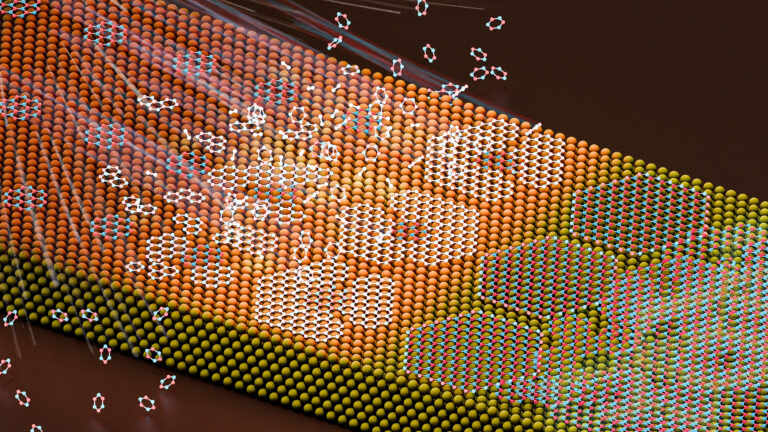
Material Science and Engineering
Atom-thin insulator grown into perfect films
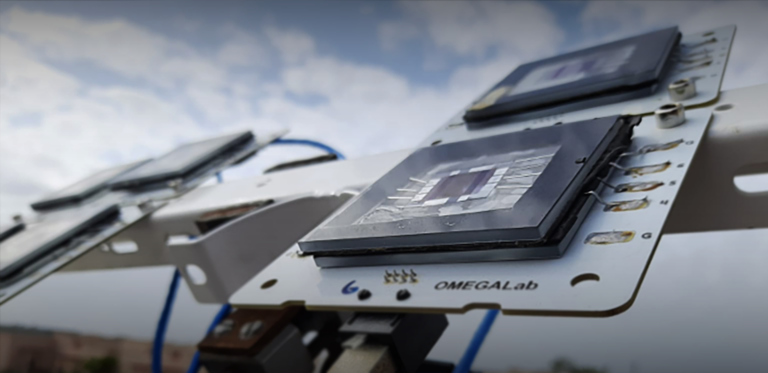
Material Science and Engineering




